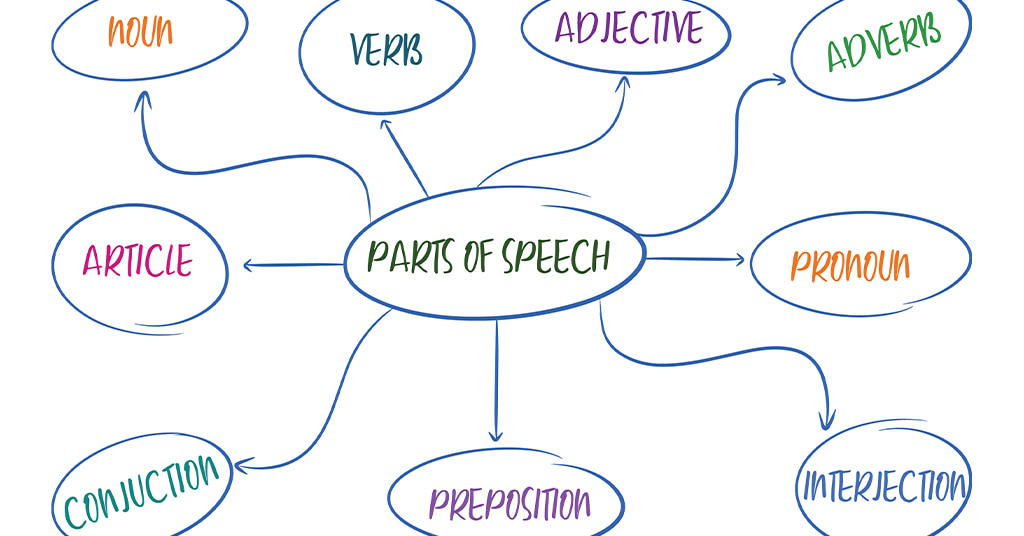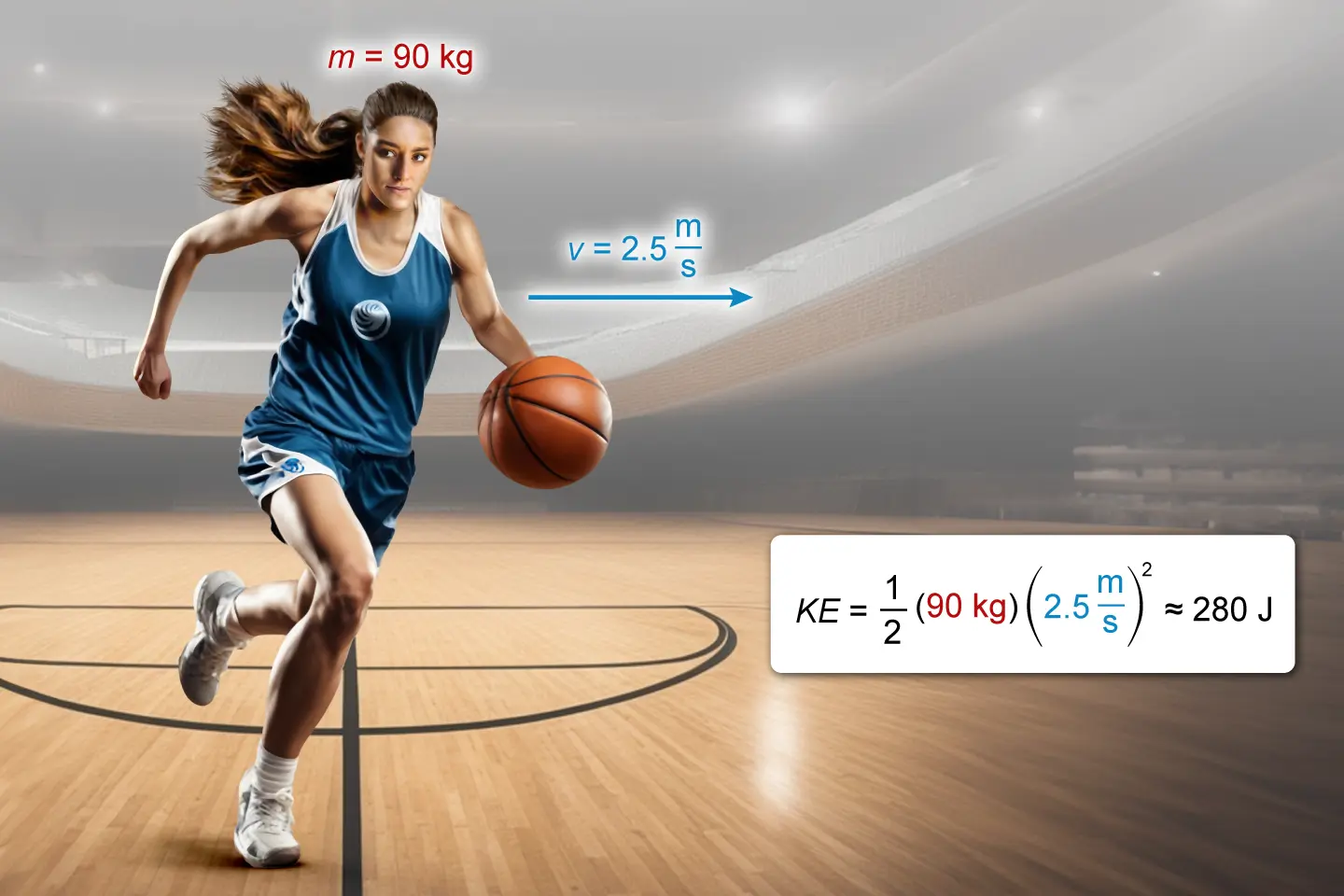Important SAT Update: Transition to Digital SAT
Effective December 3, 2023, the traditional paper-and-pencil format of the SAT has been discontinued. Starting in 2024, all students are required to take the Digital SAT, ushering in substantial changes in duration, format, material coverage, and question types. This shift to the Digital SAT represents a departure from traditional testing methods. It is crucial for students, educators, and test-takers to acquaint themselves with the new examination structure. Read more about the Digital SAT here.
The SAT® test will assess your use of verbs, conjunctions, prepositions, nouns, pronouns, adjectives, and adverbs in the Writing section. Here is a breakdown of the rules for each of these parts of speech.
1. Verbs on the SAT Test
You will be tested on linking verbs, action verbs, transitive verbs, and intransitive verbs. You shouldn’t worry about knowing the names of these verb types, but you should take time to recognize errors in usage.
Action verbs are used to show action: sometimes, the action happens through direct objects; other times, the action does not occur through a direct object.
- Transitive verbs indicate actions that occur through a direct object.
Example of a transitive verb:
I saw some beautiful cities on my trip.
The direct object of this sentence is cities. “Cities” is the noun receiving the verb “saw.”
- Intransitive verbs show actions that occur without a direct object.
Example of an intransitive verb:
I ran far today.
This sentence lacks a direct object.
Linking verbs are used to display the subject and predicate’s relationship.
Example:
I am a student.
The verb “am” shows the relationship between “I” and “student.”
Example:
The bugs sound noisy.
The verb “sound” shows the relationship between “bugs” and “noisy.”
When taking the SAT exam, pay attention to these specifics when evaluating verb use:
1) Pay Attention To Verb Tense
Practice determining when the action is taking place. Present tense, past tense, and future tense should not vary throughout the sentence.
Example of incorrect verb tenses:
After he had walked through the park, he goes past the church.
The past tense “walked” is not consistent with the present tense “goes.”
Example of correct verb tenses:
After he walks through the park, he goes past the church.
The present tense “walks” is consistent with the present tense “goes.”
Example of correct verb tenses:
After he had walked through the park, he had gone past the church.
The past tense “walked” is consistent with the past tense “gone.”
2) Pay Attention To Singulars and Plurals
You will want to pay attention to the conjugation of verbs to determine the subject-verb agreement. The basics of subject-verb agreement are as follows:
- Singular nouns and pronouns must be in agreement with singular verbs.
- Plural nouns and pronouns must be in agreement with plural verbs.
SAT questions that are concerned with subject-verb agreement are often tricky. It is important to determine who or what is doing the action and then decide if that noun is plural or singular.
2. Conjunctions on the SAT Test
Conjunctions are words that are used to tie together ideas or thoughts.
1) Types of Conjunctions
There are three types of conjunctions: subordinate, coordinating, and correlative. Subordinating conjunctions unite dependent clauses with independent clauses. The clause produced by a subordinating conjunction usually provides background information or details for an independent clause.
Some subordinate conjunctions are “if,” “unless,” “where,” “while,” “since,” “although,” “when,” and “after.”
Structurally, you will often see the subordinating conjunction at the beginning of the sentence.
Example of this format:
Unless she gets a perfect score on the SAT test, she will likely need to study more.
Coordinating conjunctions combine like words or clauses. They are words like “for,” “and,” “nor,” “but,” “or,” “yet,” and “so.”
Examples:
I want to go on vacation, but plane tickets are very expensive.
Sarah and Jim are siblings.
Your score depends on your editing skills and time management.
Correlative conjunctions are conjunctions that belong together. You will need to pay attention to conjunctions like “both” and “and,” “neither” and “nor,” or “either” and “or.”
Here is an example:
We need to either buy a cake or make one.
Here is an error you may need to fix with correlative conjunctions:
We need to either buy a cake and make one.
3. Prepositions on the SAT Test
Prepositions are words used to tell when something occurs or where something is. Some examples are “about,” “among,” “down,” “before,” and “under.” Sometimes you may come across prepositions used to describe a relationship between two things.
Prepositional Phrases
Prepositional phrases contain a preposition and a noun or pronoun. The noun or pronoun is called the object of the preposition. If a pronoun is used in a prepositional phrase, it must be in the objective case.
Here is an example:
He picked up some dinner for him and me.
This prepositional phrase is correct: it contains a preposition, “for,” and the pronoun at the end of the sentence, “me,” is in the objective case.
He picked up some dinner for him and I.
This pronoun, “I,” is not in the objective case, and so the sentence is incorrect.
You can check this work by removing the first part of the compound pronoun:
He picked up some dinner for him and I.
This is incorrect.
He picked up some dinner for him and me.
This is correct.
4. Nouns on The SAT Test
You will need to assess the use of common nouns, proper nouns, concrete nouns, and abstract nouns.
Concrete nouns reference tangible people, places, and things. Concrete nouns look like: table, people, ball, finger. These are things that can be detected or felt with one or more of our five senses.
Proper nouns reference titled or defined people, places, and things. Proper nouns look like: Charlotte, Route 66, White House, and Boy Scouts.
Abstract nouns reference topics, thoughts, experiences, and other nouns that are intangible. Abstract nouns look like: science, friendship, and faith.
Common nouns reference general people, places, and things. Common nouns look like dog, house, map, and club.
You will need to pinpoint and potentially edit mistakes with noun usage.
Here are some examples of the kinds of noun usages you may encounter on the SAT test:
1) Using a Noun as the Subject
The subject of the sentence is the noun doing the action.
This is the proper use of a noun as the subject of the sentence:
Charlie bought pizza for everyone.
The noun “Charlie” is the noun doing the action “bought.” Charlie is the subject.
2) Using Nouns in the Plural Form
Ensure that a noun is in proper agreement with the verb by noting whether it is singular or plural. If a noun is the subject of a sentence, then it needs to agree with the verb.
Here is an example of a plural noun:
The dogs catch the ball.
The subject “dogs” and the verb “catch” are both in the plural form. This is correct.
Here is an example of an error with a noun in the plural form:
The dogs catches the ball.
The subject “dogs” is plural, but the verb is in the singular form, “catches.” This is incorrect.
3) Using a Noun as a Direct Object
The direct object of a sentence is the noun that receives the action of a verb.
Here is an example:
Charlie made a delicious dinner.
To find out what the direct object is, ask what noun is receiving the verb. In this sentence, “made” is the verb. Since “dinner” is what is “made,” you can pinpoint dinner as the direct object.
4) Using a Noun as an Indirect Object
The indirect object of a sentence is the noun that receives a direct object.
Here is an example:
Charlie made a delicious dinner.
To find the indirect object, first determine the direct object. Find out what noun is receiving the verb. What is being “made”? “Dinner.” “Dinner” is the direct object. Who or what is receiving the direct object “dinner”? “Me.” “Me” is the indirect object.
5) Using a Noun as an Appositive
An appositive is a noun set within commas, used to pinpoint specifics about another noun. The appositive should be next to the noun it describes. You can check for correct usage by removing the appositive. If the sentence is still grammatically accurate, then the appositive has been used correctly.
This is a proper use of an appositive:
Our boss, Charlie, bought pizza for everyone.
The noun “Charlie” is an appositive, used to specify information about the noun “friend.”
This is an improper use of an appositive:
Our boss bought pizza, Charlie, for everyone.
This is an improper use of an appositive because of its placement in the sentence. Remember, the appositive should be right next to the noun it describes. It is unclear which noun “Charlie” is describing.
6) Possessive Nouns
To show a person’s, place’s, or thing’s ownership, you will need to check for the use of apostrophes. We have an article about possessives and apostrophes, but here are some basics to follow.
To make a singular noun a possessive, add “‘s.”
“Dog” in the possessive form is “dog’s.”
To make a plural noun a possessive, just add an apostrophe.
“Dogs” in the possessive form is “dogs’.”
7) Using a Gerund as a Noun
Sometimes, nouns are produced by an “-ing” verb. If an “-ing” verb is not used as a helping verb, then it is a gerund and should be used as a noun.
Here are some examples of “-ing” verbs being used as nouns:
Running is good for your heart’s health.
The cheering was so loud.
8) Using a Noun as an Object of a Preposition
Check to ensure that a prepositional phrase contains a preposition and a noun. The noun after the preposition is the object of the preposition.
Here is an example:
I love visiting the park across from my house.
The prepositional is “across.” What noun is “across”? “House.” “House” is the object of the preposition.
9) Using an Infinitive as a Noun
The infinitive form of a verb looks like “to ___.” The following are examples of infinitives: to run, to cheer, to shout.
Here are some examples of infinitives being used as nouns:
Sarah hates to sing.
The dog loves to chase.
My brother always wants to eat.
To check for proper usage, be sure that the infinitive is being used as a direct object. If the “to ____” verb is the thing receiving the action, then it is the direct object and using it as a noun is acceptable.
5. Pronouns on the SAT Test
Pronouns are used to replace nouns. When scanning for errors with pronouns, start by looking at the pronoun case.
1) Pronoun Case
Pronoun case refers to the function of the noun it replaces. You will want to ensure that the pronoun agrees in usage and in number. I, you, he, she, and it are pronouns that refer to singular subjects. We, you, and they are pronouns that refer to plural subjects. Me, you, him, her, and it are pronouns that refer to singular objects. Us, you, and them are pronouns that refer to plural objects.
Here are some examples:
After buying a new cookbook, John used it to make the family dinner.
The object pronoun “it” is receiving the action.
She left the gym after the workout class.
The subject pronoun “she” is doing the action.
2) Possessive Pronouns
You should know the various forms of possessive pronouns. Singular possessive pronouns are “mine,” “yours,” “his,” “hers,” and “its.” Plural possessive pronouns are “ours,” “yours,” “theirs.”
Here are some examples:
The green jacket is hers.
The house on the corner is ours.
3) Non-Personal Pronouns
Non-personal pronouns do not need to shift for objects and subjects. They include: “this,” “that,” “both,” “which,” “who,” “many,” “one,” and “either.” Non-personal pronouns are used for singular and plural objects, as well as singular and plural subjects.
You may need to check if the verb is in agreement with the non-personal pronouns by adding “one” or “of them” to the pronoun.
Examples of correct usage:
I have two sisters. Both are older than me.
Examples of incorrect usage:
I lent her my book and some was useful.
“Some” does not match the singular verb “was.”
I lent her my book and some (of them) was useful.
Adding “of them” to the sentence emphasizes this error.
4) Pronoun Rules
- A pronoun must have an antecedent.
- Pronouns and antecedents must match in gender and number.
- Pronouns must be consistent throughout the sentence.
6. Adjectives on the SAT Test
Adjectives are words that describe or adjust nouns and pronouns.
1) Common and Proper Adjectives
Adjectives are either proper or common. Proper adjectives must be capitalized and are produced from proper nouns. Common adjectives are words like hairy, fast, glittery, or vibrant.
Here are some examples of proper adjectives in use:
She owns a French pastry shop.
My family has Italian heritage.
This broach is from the Victorian era.
Here are some examples of common adjectives:
Her pastries are delicious.
The wrapping paper was glittery.
The colors in her paintings are so vibrant.
2) Using a Noun as an Adjective
Sometimes, nouns are used as an adjective to specify a category or type for a person, place, or thing. You should note when a noun is being used as an adjective to pinpoint comma errors.
Example:
The business school is at the center of campus.
The soccer field was packed with fans.
Examples of errors with commas when using a noun as an adjective:
The business, school is at the center of campus.
The soccer, field was packed with fans.
3) Using a Verb as an Adjective
Some adjectives are created by modifying a verb: these are called participles. To make a verb an adjective, add “-ing” to present participle verbs or “-ed” to past participle verbs.
Example of a present participle:
The cracked vase had to be thrown away.
Example of a past participle:
The scorching sun killed all of my plants this weekend.
4) Possessive Adjectives
Sometimes adjectives are used to display ownership. This is formulated by starting with personal pronouns (like I, me, you, he, she, it, they, we, you).
These personal pronouns match with possessive adjectives, like this:
I: my
Me: my
You: your
He: his
She: her
It: its
We: our
You: your
They: their
Example:
She owns that house. That is her house.
The second sentence uses “her” as a possessive adjective.
5) Demonstrative Adjectives
Demonstrative adjectives are used to modify a noun. They can replace pronouns.
Some examples are “these,” “this,” “that,” and “those.”
Example:
This is the street I grew up on. I grew up on this street.
The second sentence uses “this” as a demonstrative adjective.
6) Comma Rules With Adjectives
Use commas to separate multiple adjectives that describe one noun.
Example:
The purring, soft cat cuddled up on the couch.
The soft, purring cat cuddled up on the couch.
If the adjectives’ order is important, and rearranging them would affect the logic of the sentence, then placing a comma between them is incorrect.
Example:
We loved to climb the tall oak trees.
The order of the adjectives is important. A comma between “tall” and “oak” would be incorrect.
We loved to climb the oak tall trees.
Placing the adjectives out of the original order does not make sense. This sentence is incorrect.
7) Adverbs on the SAT Test
Adverbs adjust or describe adjectives, verbs, and adverbs. They are most often produced by adding “-ly” to an adjective.
You will need to know how to pinpoint the difference between using an adjective and using an adverb on the SAT test. To do so, start by determining what is being adjusted or changed by the adverb or adjective. You will be able to spot errors this way.
Example:
She studies regularly for the SAT exam.
The adverb “regularly” is used to describe the verb “studies.”
Here is an example of what an error may look like:
The young girl was growing shockingly quickly for her age.
Start by looking for the thing that is being affected by the adverb. In this sentence, the verb “growing” is modified by the adverb “shockingly” and “quickly.” The second adverb should be an adjective in this case.
Here is the correction:
The young girl was growing shockingly quick for her age.
You can practice the parts of speech covered in this article through UWorld’s SAT Prep Course. These rules for verbs, conjunctions, prepositions, nouns, pronouns, adjectives, and adverbs in the Writing section can feel overwhelming. But the details we have covered here can serve as an excellent baseline for finding errors throughout the Writing test.
UWorld’s Prep Course also offers detailed question explanations and performance tracking tools to guide your studies and find weak points. Try it out to improve your scores in the Writing section of the SAT exam!




